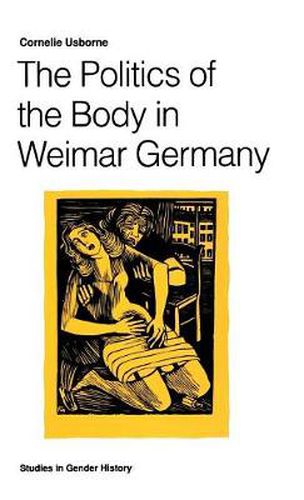Readings Newsletter
Become a Readings Member to make your shopping experience even easier.
Sign in or sign up for free!
You’re not far away from qualifying for FREE standard shipping within Australia
You’ve qualified for FREE standard shipping within Australia
The cart is loading…






This title is printed to order. This book may have been self-published. If so, we cannot guarantee the quality of the content. In the main most books will have gone through the editing process however some may not. We therefore suggest that you be aware of this before ordering this book. If in doubt check either the author or publisher’s details as we are unable to accept any returns unless they are faulty. Please contact us if you have any questions.
In the first three decades of this century Germany was concerned to protect its Volkskorper, the body politic, from the ravages of a social disease which affected all western Europe. This disease was a decline in the birth rate. The solution to this disease involved interfering with the Frauenkorper, the female body. German women’s sexuality was to be controlled so that the number of healthy children required for a powerful state would be produced. However the politics of reproduction carried a potential conflict between Volkskorper and Frauenkorper, between collective and individual interests. This conflict is central to this study which analyses the tactics which the German state and its agencies used to regulate the size and balance of population to accord with their social, economic and political beliefs rather than with the views and wishes of individuals. During the Weimar Republic individual women and families were the target of intervention in four different areas of policy those of maternity, sexuality, contraception and abortion. In this study birth control is understood to encompass all the popular practices of avoiding unwanted children as well as the two different aspects of fertility control, individual reproductive choice and state population planning. This book is concerned with the effects of the declining birthrate and not with its causes. It examines the fear demographic change instilled in policy makers and the opportunities it opened for, and constraints it imposed upon women. It gives a brief overview of imperial policy and examines in detail Weimar policies which introduced important welfare legislation and legal reforms concerning sexuality and fertility control.
$9.00 standard shipping within Australia
FREE standard shipping within Australia for orders over $100.00
Express & International shipping calculated at checkout
Stock availability can be subject to change without notice. We recommend calling the shop or contacting our online team to check availability of low stock items. Please see our Shopping Online page for more details.
This title is printed to order. This book may have been self-published. If so, we cannot guarantee the quality of the content. In the main most books will have gone through the editing process however some may not. We therefore suggest that you be aware of this before ordering this book. If in doubt check either the author or publisher’s details as we are unable to accept any returns unless they are faulty. Please contact us if you have any questions.
In the first three decades of this century Germany was concerned to protect its Volkskorper, the body politic, from the ravages of a social disease which affected all western Europe. This disease was a decline in the birth rate. The solution to this disease involved interfering with the Frauenkorper, the female body. German women’s sexuality was to be controlled so that the number of healthy children required for a powerful state would be produced. However the politics of reproduction carried a potential conflict between Volkskorper and Frauenkorper, between collective and individual interests. This conflict is central to this study which analyses the tactics which the German state and its agencies used to regulate the size and balance of population to accord with their social, economic and political beliefs rather than with the views and wishes of individuals. During the Weimar Republic individual women and families were the target of intervention in four different areas of policy those of maternity, sexuality, contraception and abortion. In this study birth control is understood to encompass all the popular practices of avoiding unwanted children as well as the two different aspects of fertility control, individual reproductive choice and state population planning. This book is concerned with the effects of the declining birthrate and not with its causes. It examines the fear demographic change instilled in policy makers and the opportunities it opened for, and constraints it imposed upon women. It gives a brief overview of imperial policy and examines in detail Weimar policies which introduced important welfare legislation and legal reforms concerning sexuality and fertility control.